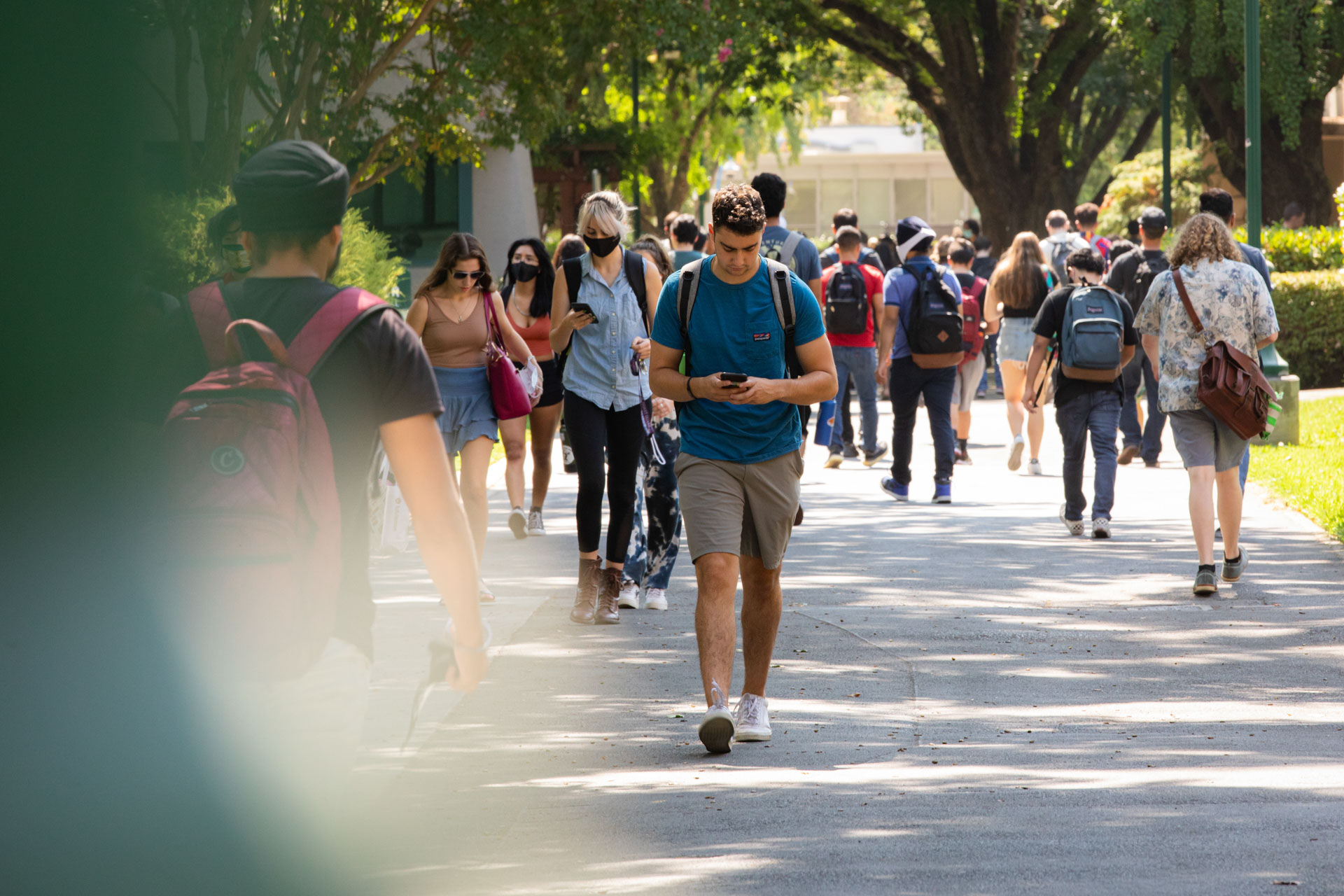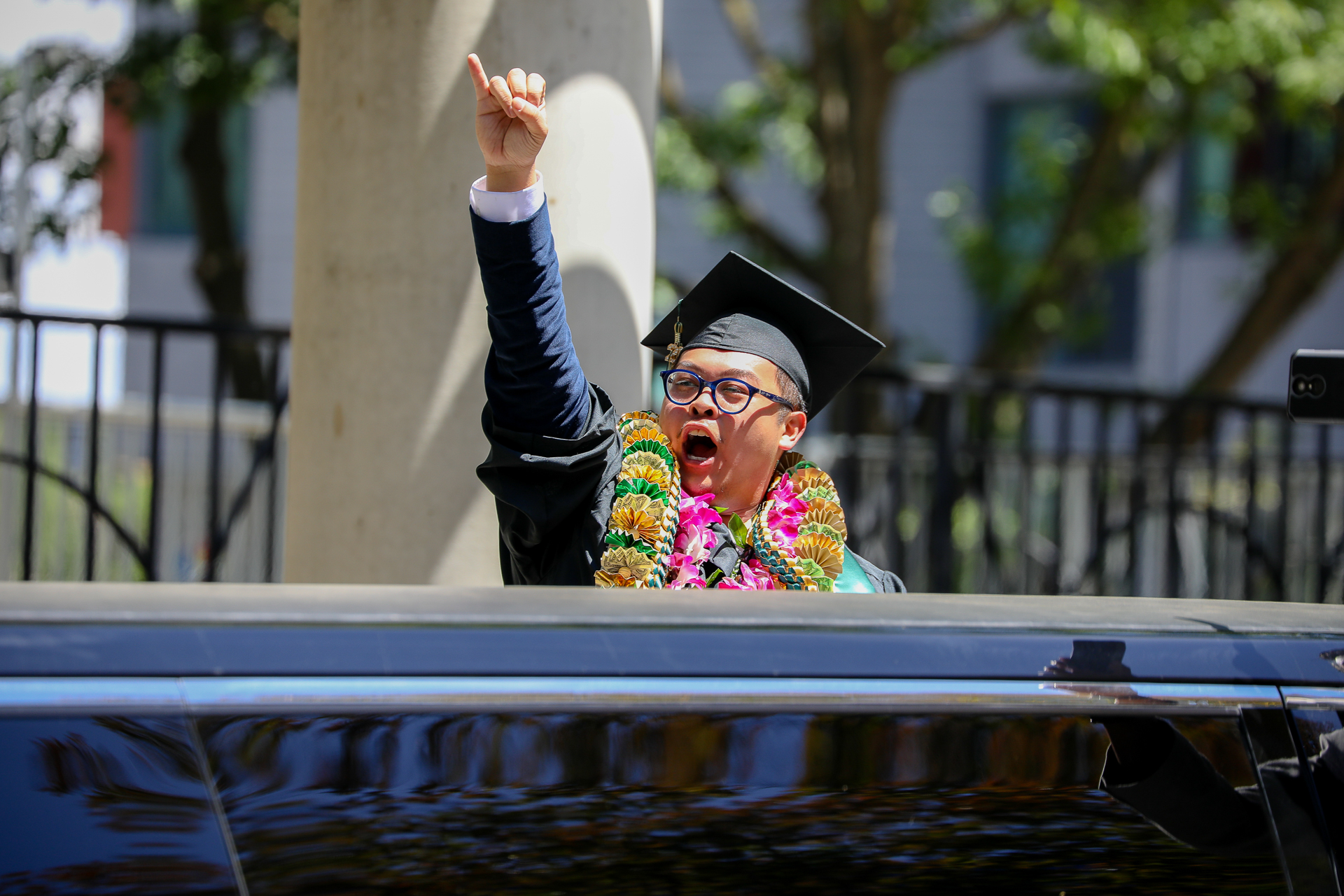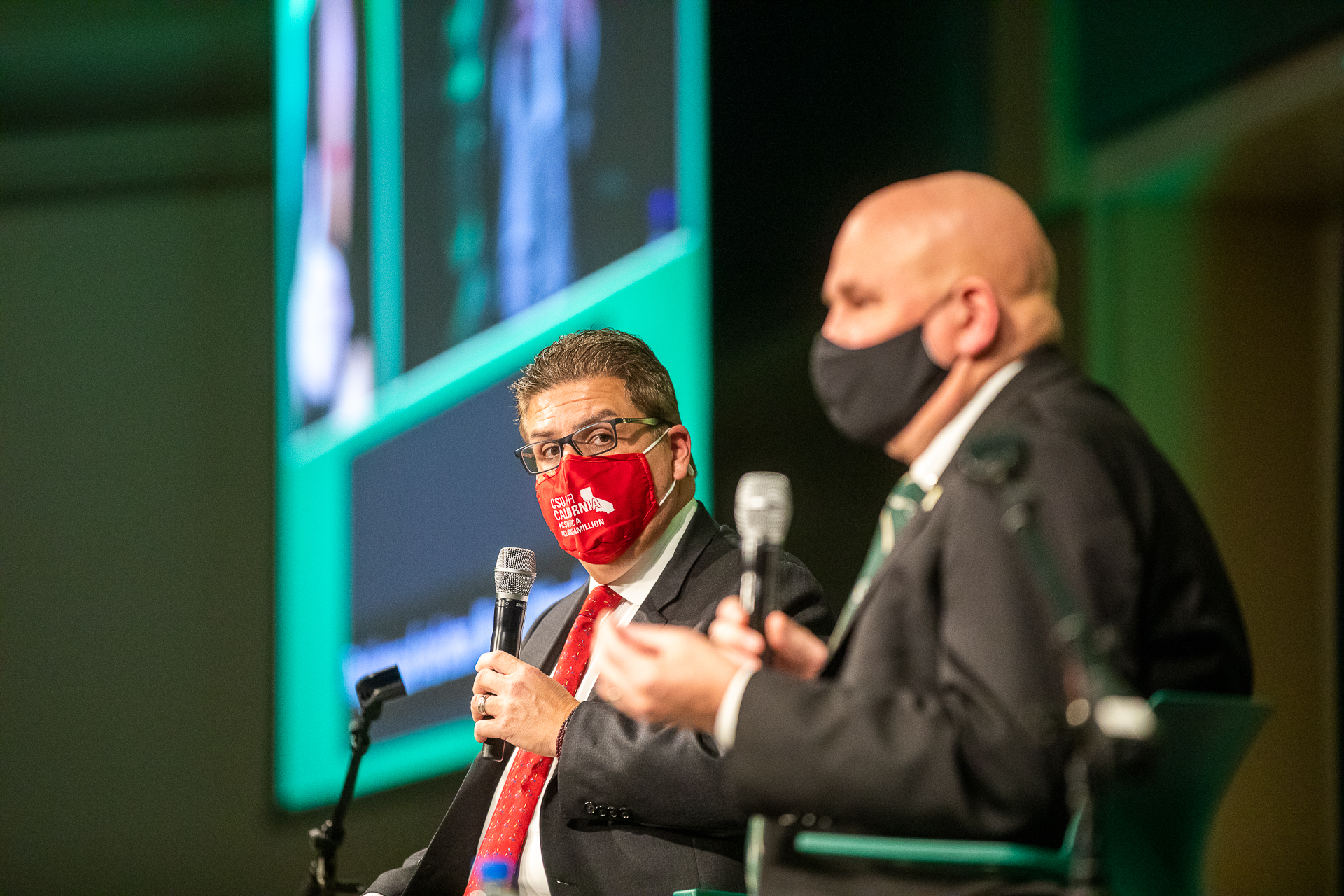Story Content
Hope vies with uncertainty to color Sac State student, faculty outlook in transition back to campus
November 08, 2021
During the darkest days of the COVID-19 pandemic, choral music wafted from an empty parking garage across an otherwise quiet campus. Sacramento State’s University Chorale students, standing 12 feet apart and wearing face coverings, rehearsed, anticipating performing before live audiences again someday.
Photographs by Andrea Price | Video by Rob Neep
Across campus, Biology professors moved in and out of their emptied labs at the Ernest E. Tschannen Science Complex, tending to fish, insects, and other specimens that students, upon their return, would study close up.
Scholars and faculty interacted daily on Zoom grids, often from home, where family, pets, and other aspects of daily life competed with the demands of teaching and learning.
Assessing what might come next, members of a Sac State community that numbered more than 30,000 students and thousands more faculty and staff wondered if the University would ever be the same after realities created by COVID-19 in March 2020 forced most of them to scatter. For 17 months, the campus existed in various states of dormancy.
During that lull, however, campus leaders adapted and adjusted, putting the pieces in place for the community to safely come together again. They revamped classrooms to allow for social distancing, and installed “smart” technology to support in-person, remote, and hybrid course delivery.
They launched a vaccine clinic and mandated inoculations and indoor masking on campus. They stocked up on hand sanitizer and face coverings.
Staff began returning to campus during the summer of 2021, and in August, the campus showed renewed life as many students and faculty came back for the start of the fall semester. When classes began, about 60% of students were registered to take at least one course in person. Sac State’s overall enrollment hit a new record.
With the virus tamed but not defeated, members of the Hornet Family cautiously returned to familiar routines, or established new ones. Coffee shops and restaurants reopened. Fans gathered for Sac State athletic events. Students moved into residence halls. Professors altered their classes in response to the realities of teaching during a pandemic.
Nonetheless, some effects of the waning pandemic remain.
“Safety Ambassadors” in green vests roam the campus, ready to answer questions about COVID-19 safety protocols, and signs remind everyone to wear face coverings and “Protect the Hive.”
As the historic Fall 2021 semester advances, anxiety and hope compete within the campus community. For many, it is a semester they likely won’t forget, one that represents significant challenge and tests of their strength and resiliency – but also a time when life began to feel normal again.
SAMANTHA ELIZALDE
Political Science student and Associated Students Inc. president
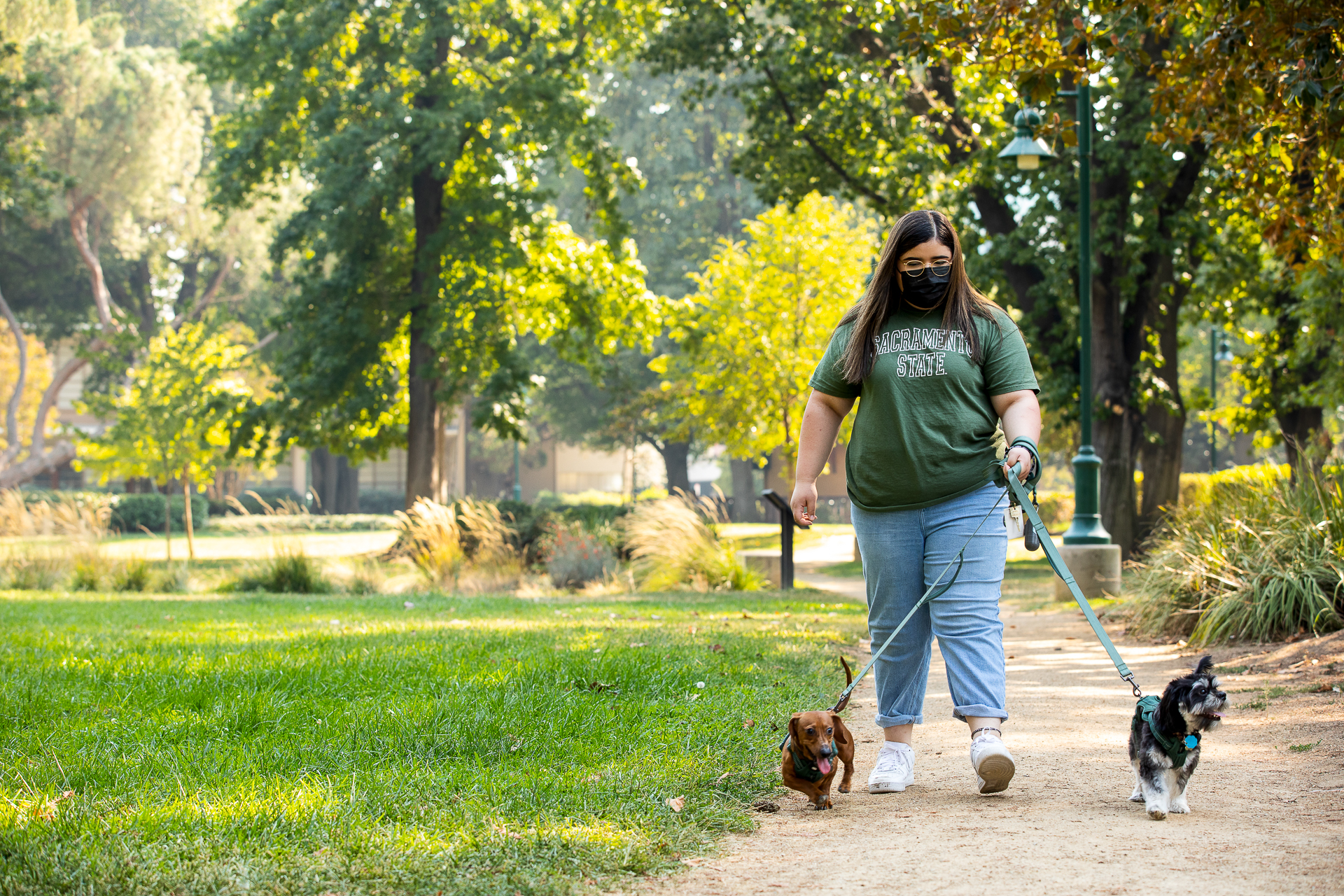
“I missed it 100%. “It feels so good to be back again.”
Samantha Elizalde was more than ready to be back on campus. Since the pandemic chased her home to Southern California in March 2020, she had tired of staring at a computer screen to take her classes, see her friends, and fulfill her duties as Sac State’s newly elected student body president.
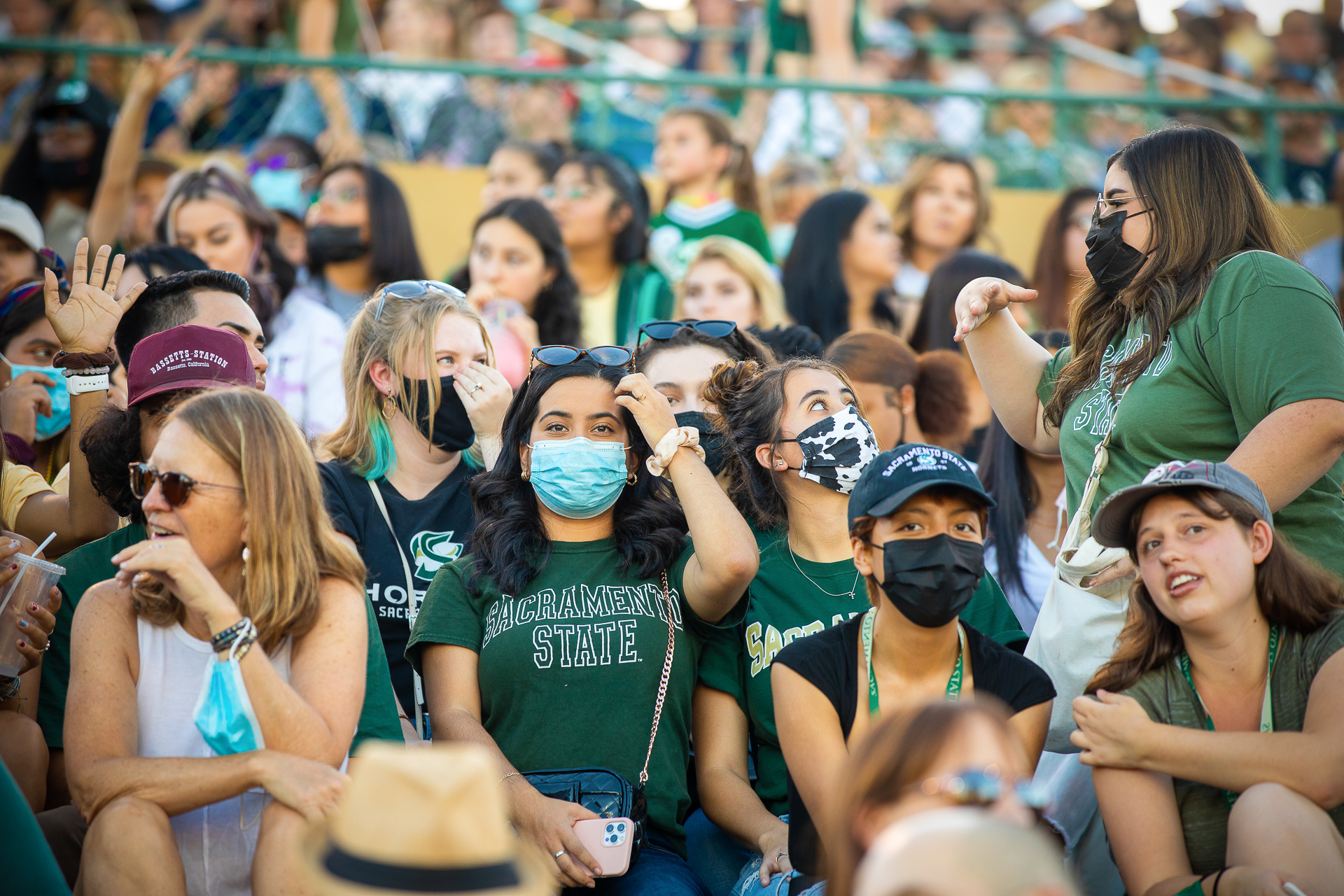
Was she, however, ready to be in a stadium among thousands of other fans to watch the Hornet football team play its first home game since December 2019? Yes, she decided. She believed she could cheer for the team and still protect herself and others from COVID-19.
“I was excited,” she said. “I decided to rip off the Band-Aid.”
On Sept. 11, 2021, just 12 days after classes resumed, Elizalde and a few friends donned face coverings and headed to the stadium. They dressed in Sac State green, waved pompoms, and rejoiced when the Hornets scored against the University of Northern Iowa.
“It was a little nerve-wracking at first, but I stayed in my little group, and I did what I had to do to keep myself and others safe,” she said. “I had fun.”
The previous 17 months had been anything but fun. Elizalde was grateful to be home with her parents, but acutely felt the isolation and anxiety of being confined indoors. She missed her leafy campus and Sac State community.
“There was a loneliness,” she said. She adopted two “pandemic puppies,” Mo and Cooper, to help keep the sadness at bay, and counted the days until she could return to Sac State.
“I missed it 100%,” she said, walking her dogs across the Main Quad one warm fall afternoon. “It feels so good to be back again.”
CAROLYN GIBBS
Professor of Interior Architecture
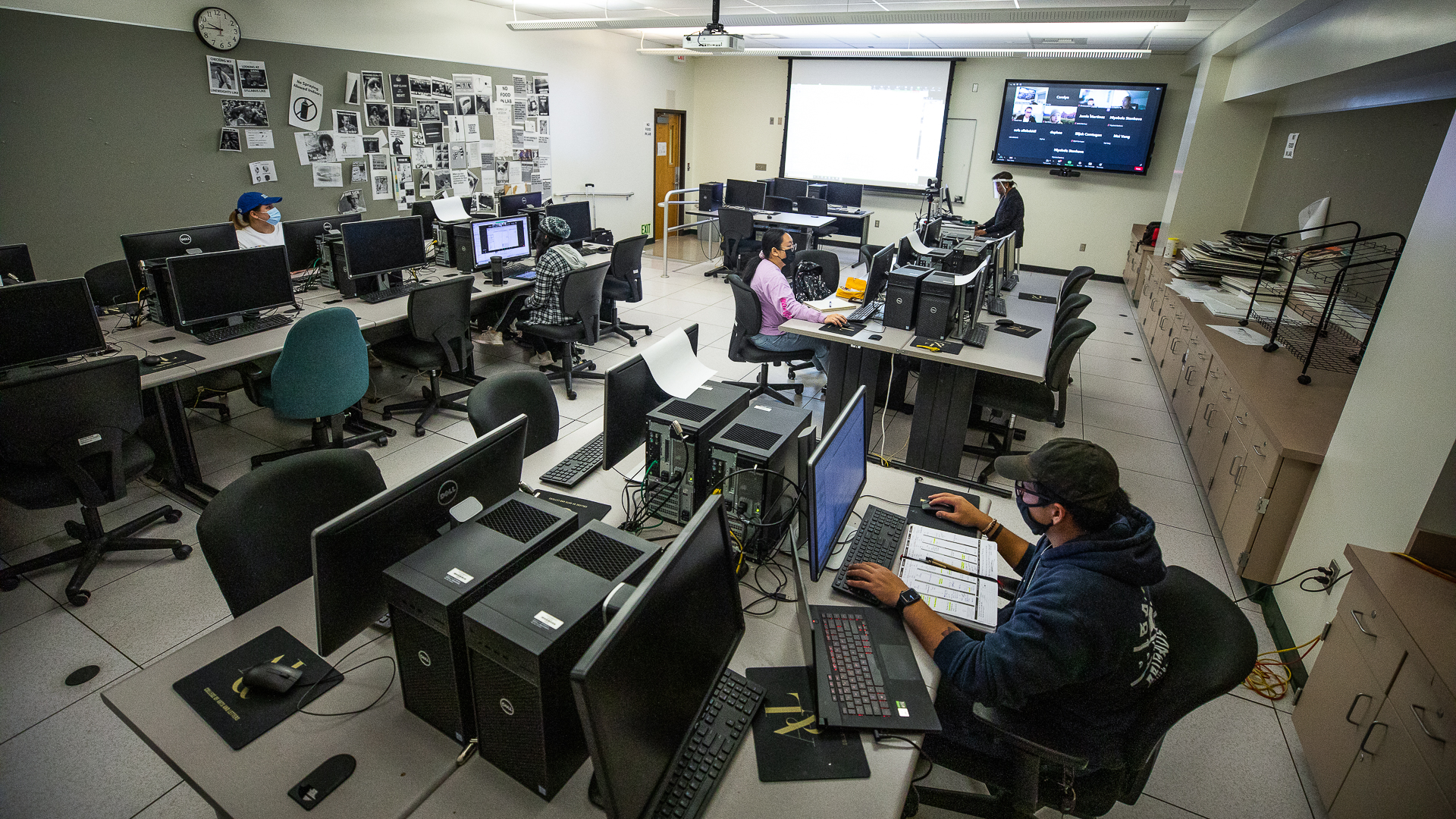
"It’s an ongoing process of figuring out how to use class time most productively in this new normal."
Carolyn Gibbs addressed her Interior Design students wearing a clear plastic face shield, a container of sanitary wipes at her side.
Speaking into a large microphone, she stood before a handful of socially distanced, masked students in her classroom and a few others whose faces appeared on an oversized Zoom grid on a wall-mounted screen. When students had questions about a design element, they shared their screens with the virtual group so everyone could participate.
This is what education during a pandemic looks like for Gibbs, who in addition to teaching her students chairs Sac State’s Department of Art.
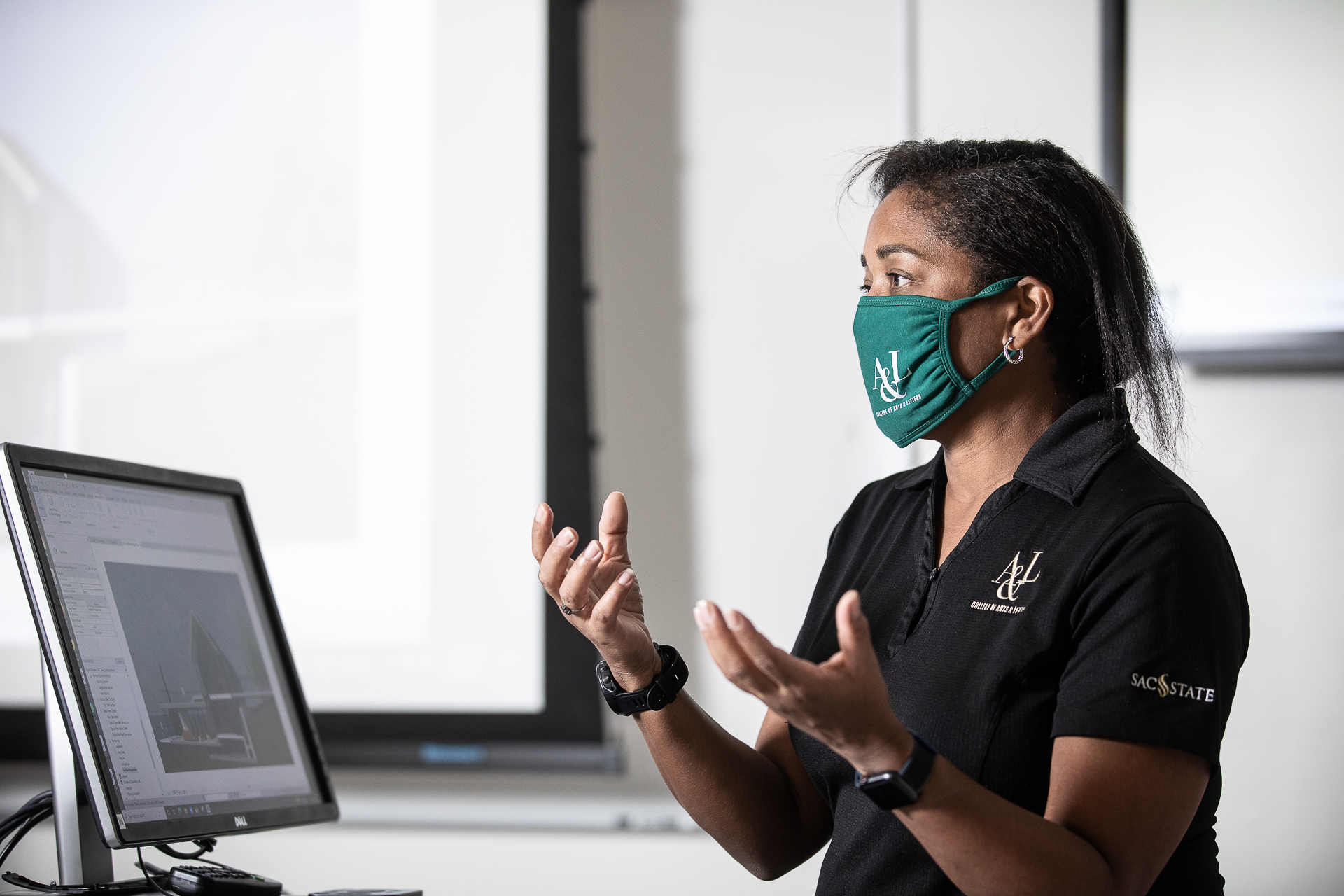
“It’s a slower process because of the screen sharing,” Gibbs said, and her inability to see the faces of masked students in the classroom sometimes makes it difficult for her to gauge whether they are grasping complex information. Overall, though, it works.
“I actually think more learning is happening this way, because now all students are learning from one another as well as from me when they get stuck on a problem,” she said. “It’s an ongoing process of figuring out how to use class time most productively in this new normal.”
The fall semester marks the first time Gibbs has been regularly on campus since 2019. She spent last year working from home, helping the Art faculty manage the sudden and difficult pivot to virtual learning.
The idea of teaching “hands-on” courses online – including ceramics, sculpture, and printmaking – was particularly daunting, Gibbs said.
She worked with College of Arts and Letters Dean Sheree Meyer and consulted with health officials and others to arrange for those students to safely take their classes on campus in fall 2020. Professors in other specialties had to switch to virtual teaching. Now, many use a hybrid approach to instruction.
“I really wanted to get back to the classroom” this semester, Gibbs said, a transition that has not been without bumps.
“It’s still a little bit different having to wear a mask, and keep my distance around people,” she said. “I’m still learning to be in a crowd without anxiety.
“It’s getting better. But I’m not quite there yet.”
ATINA DIEP (Mechanical Engineering) and EMMI PARGAMENT (English)
Students and resident advisors
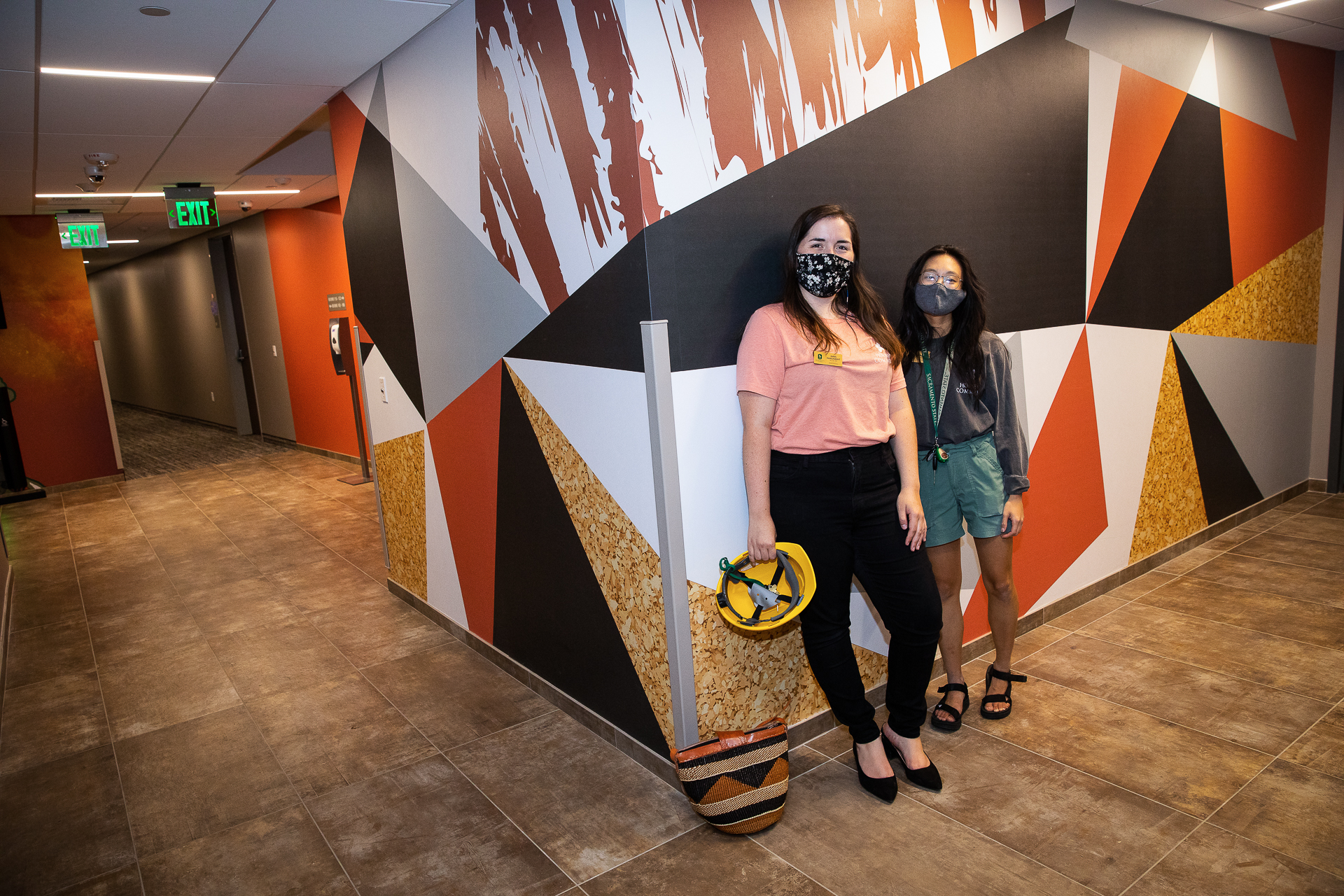
"Finally getting to come to campus is kind of overwhelming, but in a great way."
The life of a resident advisor comes with plenty of responsibilities. At the residence halls where they live, they must mediate disputes, schedule activities, and generally help students navigate college life.
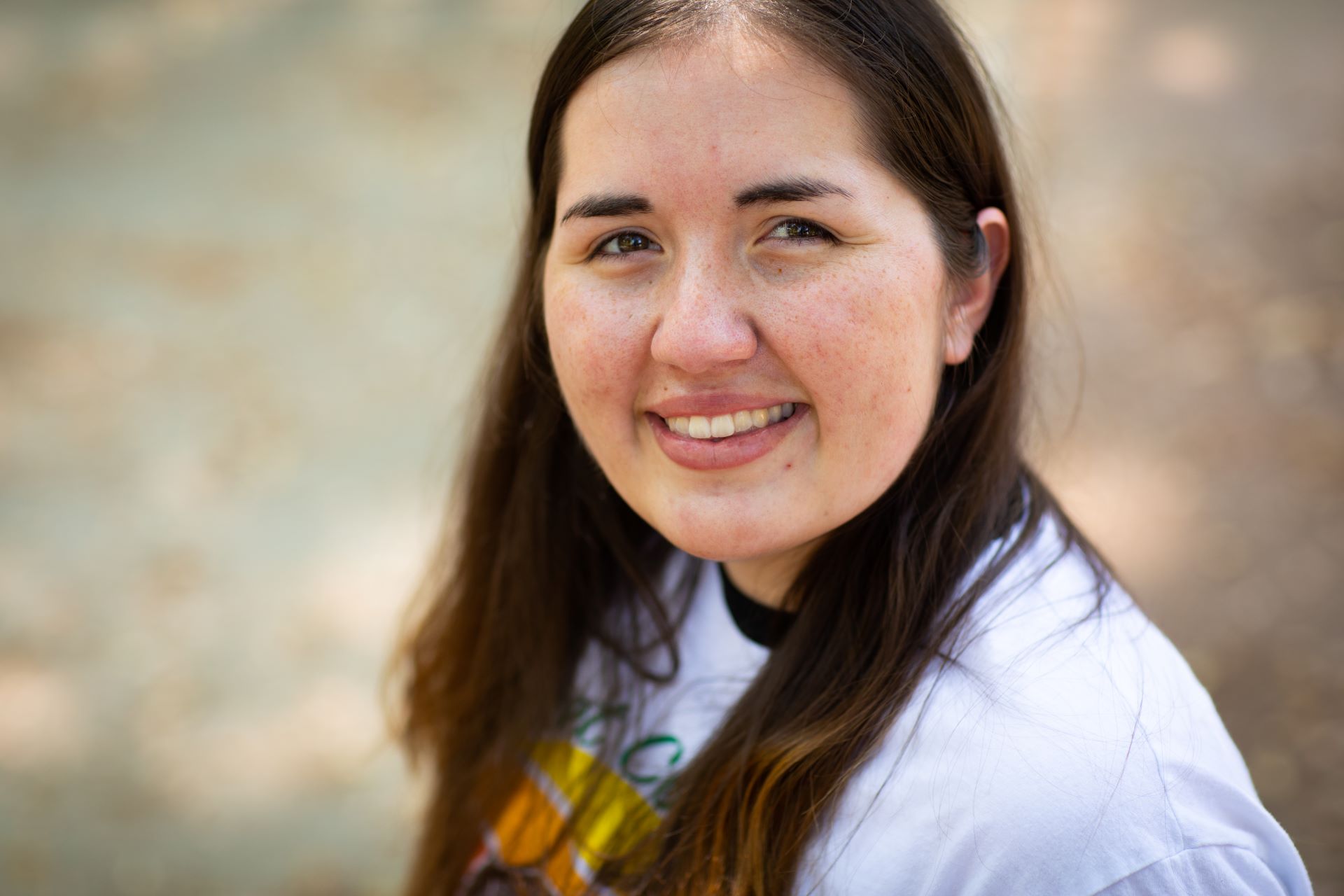
For RAs such as Atina Diep and Emmi Pargament, those responsibilities are magnified this semester as students return to campus after a long absence.
At Hornet Commons, where both women live and work, face coverings are available at the front desk. Diep and Pargament have been instructed to encourage everyone to wear them while in the building.
“Some students have been adamant about not doing it,” Pargament said. The encounters can be uncomfortable. When faced with strong resistance, the RAs seek help from managers or security personnel.
Throughout the evening until after midnight, Pargament and Diep walk across the premises, streetlights illuminating their masked faces. Part of their duty is to make sure residents are safe, and that no one is playing loud music or otherwise disturbing the peace.
“It’s kind of nostalgic being back on campus, even though we have to cover our faces,” said Diep, who wears her face covering even while strolling across campus and exercising on the climbing wall at The WELL.
Diep transferred to Sac State from community college in fall 2020, so she studied strictly online during her first year at the University.
“Finally getting to come to campus is kind of overwhelming, but in a great way,” she said. “At first, it was disbelief. Now, it’s real.”
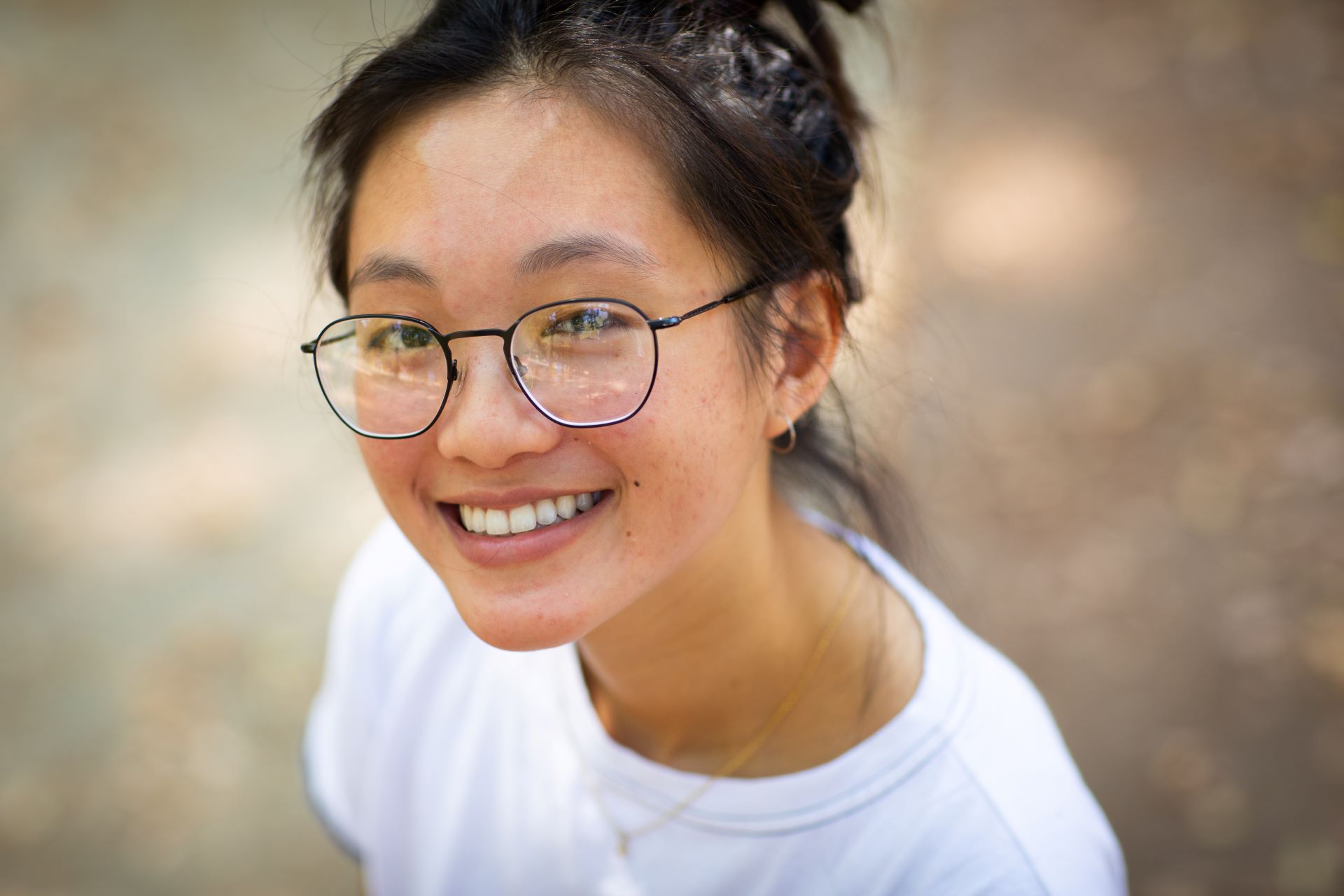
Pargament lived in campus housing as an RA throughout the lockdown that began in March 2020. Though some students remained in residence halls, “It felt like the walking dead around here,” she said.
As the campus began to repopulate, her spirits lifted.
“Seeing people on Zoom is one thing, but seeing them in person is completely different,” Pargament said. “To see them face to face, to see how tall they are, it’s a thing.”
The women will remember fall 2021 as “an unforgettable time,” Pargament said.
“It’s been interesting. I’m keeping my COVID vaccine card to show my children and grandchildren.”
CLINT COLLINS
Professor of Biology
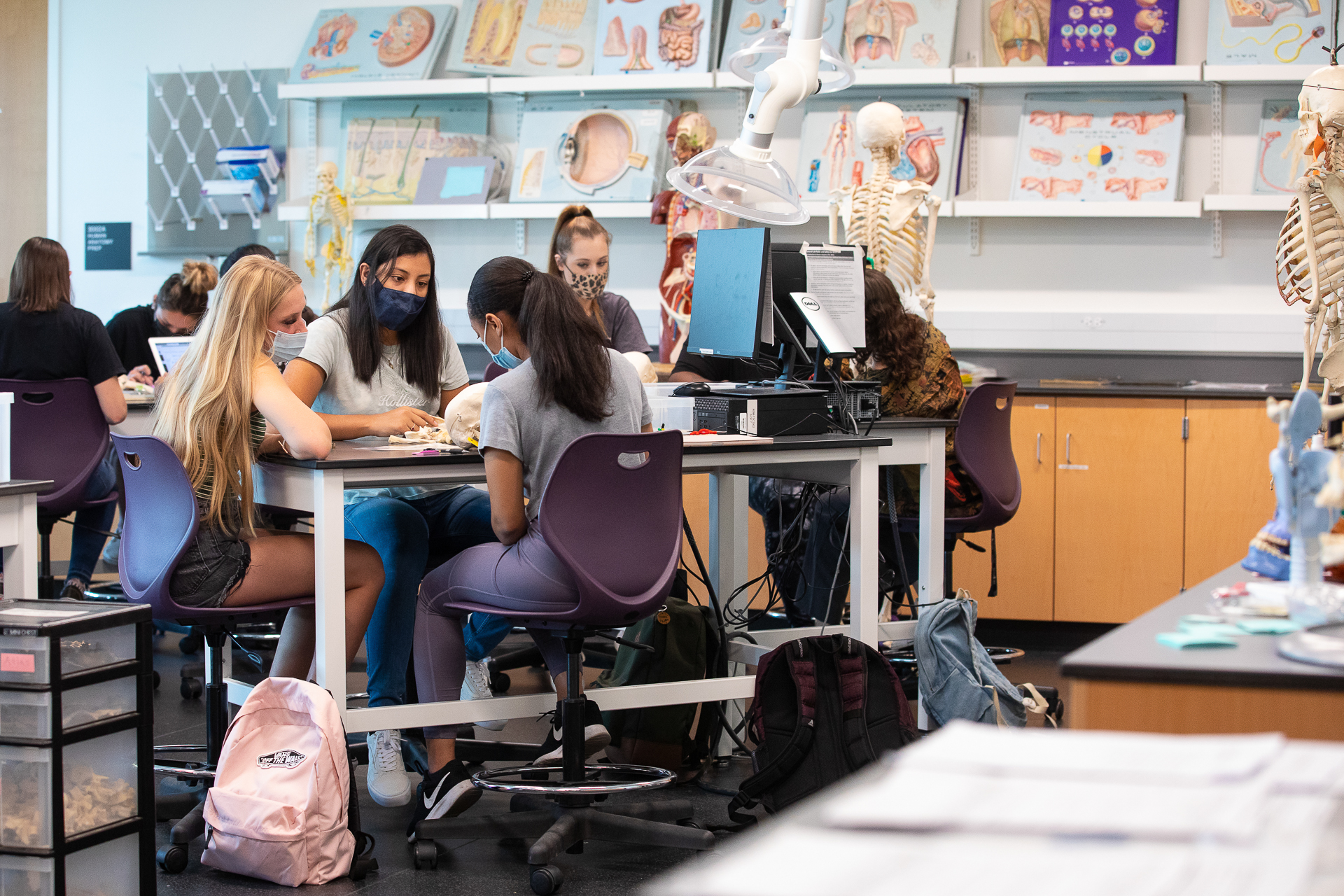
"We lost our sense of community during the pandemic, so we wanted to do something to build it up again."
When Clint Collins welcomed students back to his Human Anatomy class after a year and a half of teaching from home, they broke into applause.
“We were all so excited to be back,” Collins said. “I think everyone values interactions with one another so much more now, after all we have been through. But we also realize that they carry a risk.”
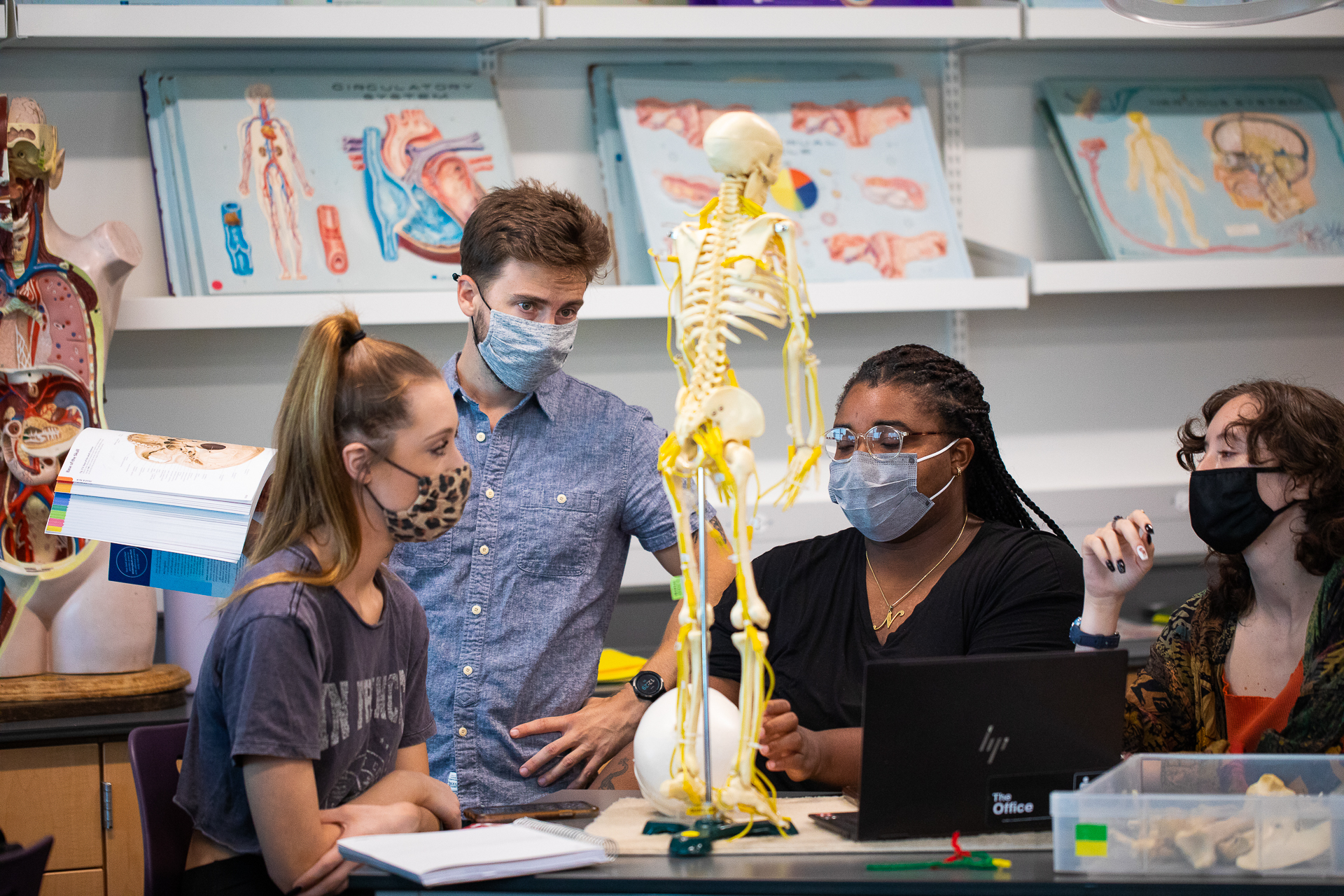
Collins said his inability to interact with students face to face “took the joy out of teaching.” However, he and other professors learned how to teach effectively online and now are bringing techniques they used during the pandemic-caused separation into their classrooms.
Instead of memorizing names and functions of muscles and bones and being tested on that knowledge, students now demonstrate anatomical functions “in motion” during labs. It is a variation of what Collins instructed them to do when they had to study at home. There, they recorded themselves or family members using specific bones and muscles, then submitted the videos to Collins.
Collins, working with a group that included Professors Robin Altman and Jennifer Lundmark, also launched “team building” activities while students were off campus.
“We lost our sense of community during the pandemic, so we wanted to do something to build it up again,” he said.
In his lab, students are separated into small groups whose members create team “contracts” that speak to their values, tasks, and leadership goals.
On a recent day, in a classroom cluttered with synthetic skeletons, internal organs, and other body parts, Collins moved across the room, stopping at each lab table to observe, advise, and answer questions. Students wearing face coverings of all colors and designs collaborated with their teammates as they examined skulls, ribs, and bones of the hands and feet.
Collins and his students said they enjoy the new approach to learning.
“It’s working out great, and I’m really happy about liking my job again,” Collins said.
JOEL DUBOIS
Professor of Religious Studies
"I’m seeing students excited about investigating historical material. It’s been exhausting at times, but it’s fun."
“All rise for entrance of the royal party,” Professor Joel Dubois declared enthusiastically at the beginning of his Asian Religions and Cultures course on a September day.
For Dubois and his students, “role-playing” games have replaced lectures since the pandemic struck.
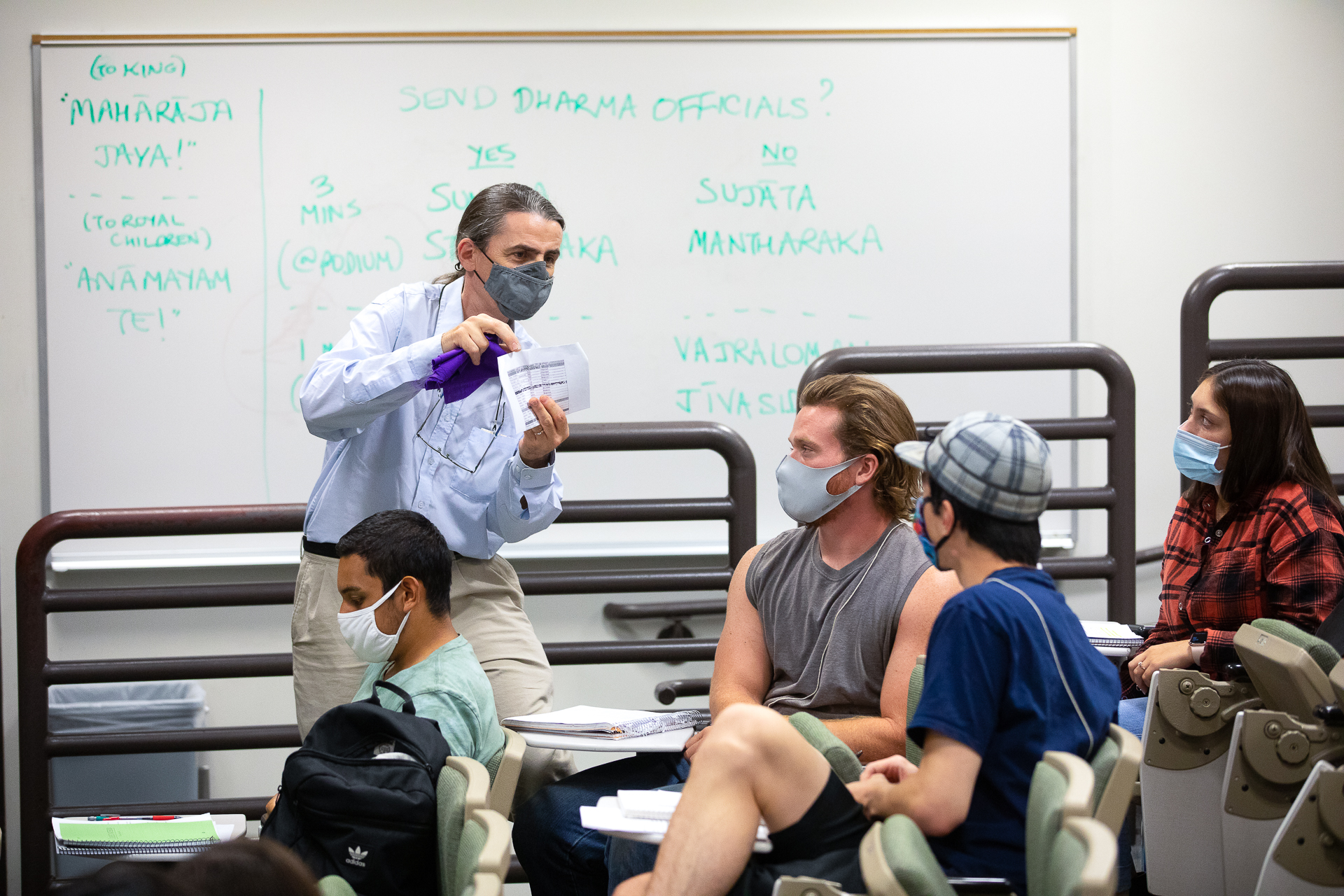
During his synchronous Zoom classes, “students were only half present,” Dubois said. “At home, everyone has a device that contains at least a dozen things that they can look at” rather than give their full attention to a lecture.
Role-playing allows for learning that is more active and “helps students to not tune out,” he said.
Preparation for the sessions is complicated, not unlike “managing a stage production,” Dubois said.
For his fall 2021 course, students assembled into groups that made arguments before Emperor Ashoka, ruler of the Mauryan dynasty in India during the third century BCE.
The course explores, in a refreshing new way, “what history means, and its relevance to today,” Dubois said.
At a recent session, students wearing colored sashes representing their groups stood before royal representatives of the emperor. “Maharaja Jaya!” they said, honoring the king and royal children.
Each made a case for either armed conquest or peaceful resolution of conflicts. Some of the role players were passionate, others tepid, though all were engaged in the lesson. The speeches sparked lively discussions among students.
Participants will be graded based on their knowledge of the material, as reflected in their presentations.
Dubois said the new semester has been a triumph in his classroom. Students have accepted health and safety rules and, mostly, complied with them. They are enthusiastic about new approaches to learning.
“I’m seeing students excited about investigating historical material,” Dubois said. “It’s been exhausting at times, but it’s fun.”
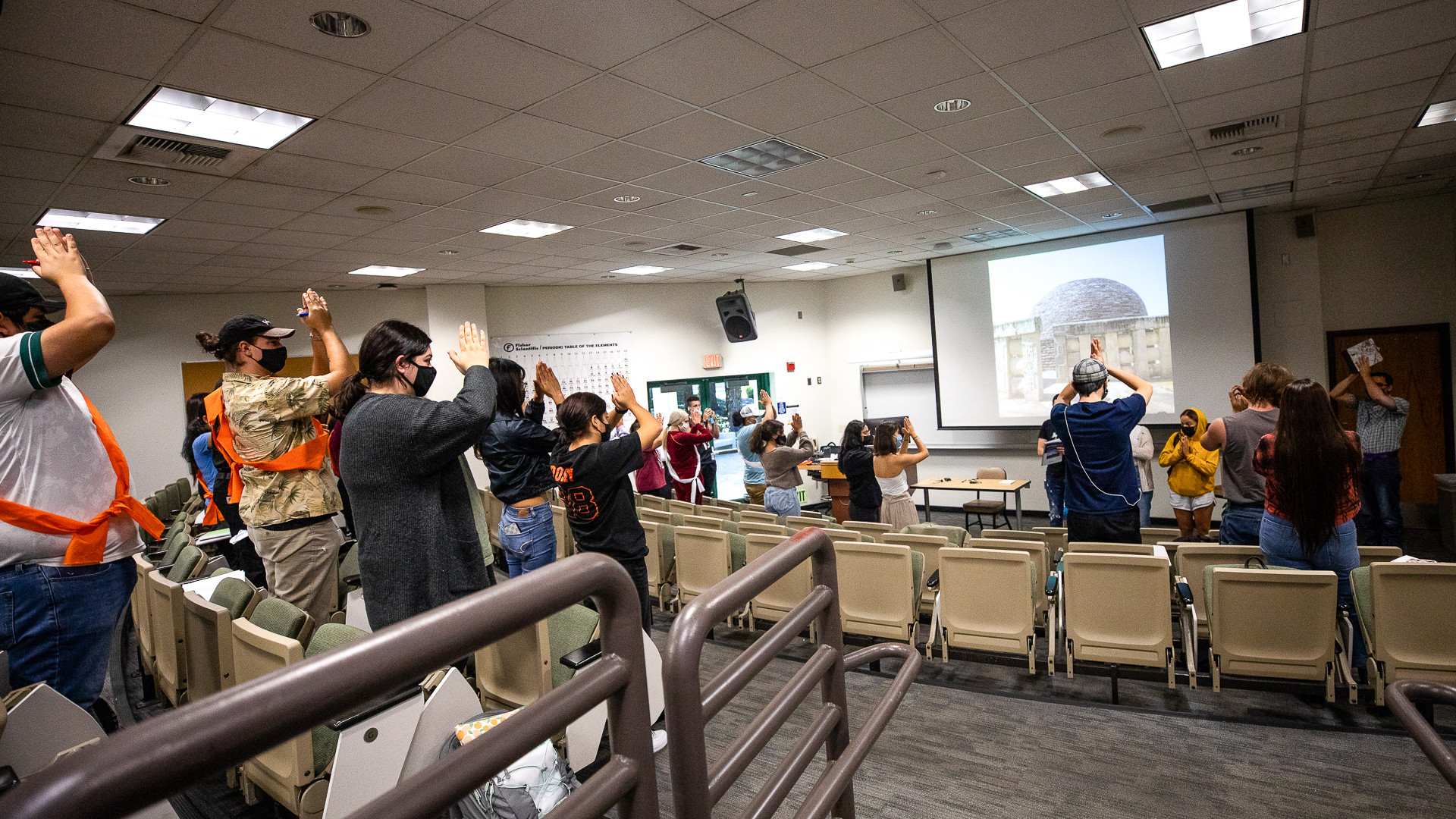
***
Are you interested in supporting Sac State programs? See giving opportunities.
Fall 2021: Beauty on Campus
Media Resources
Faculty/Staff Resources
Looking for a Faculty Expert?
Contact University Communications
(916) 217-8366
communications@csus.edu
